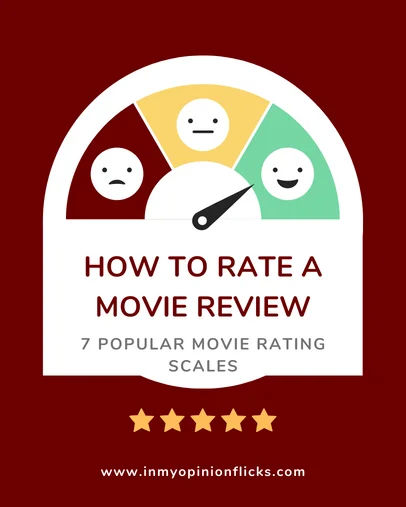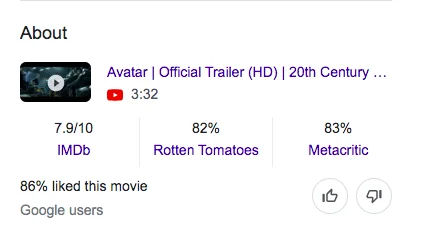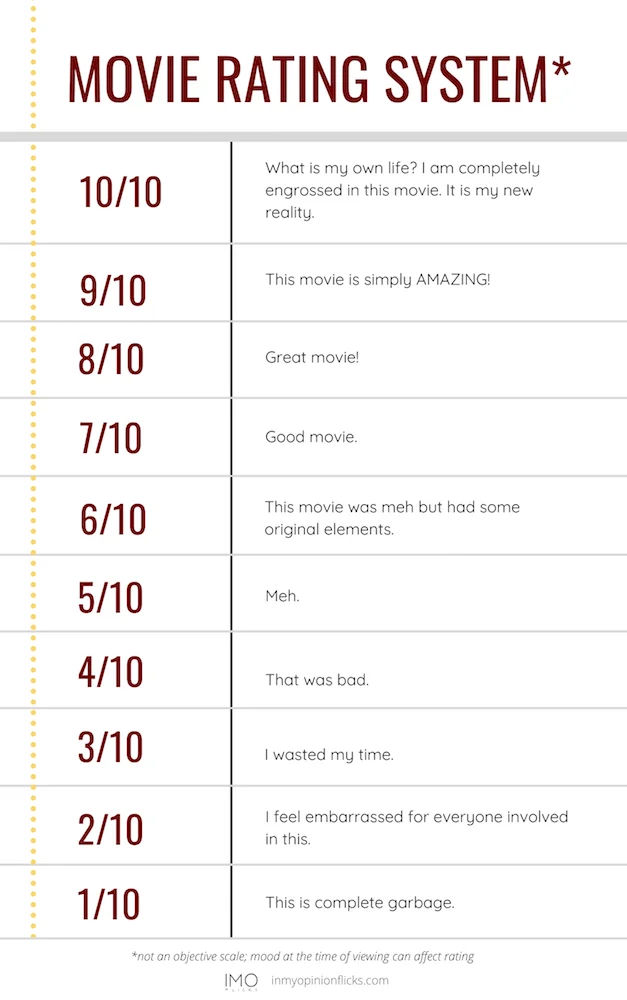How To Rate a Movie | 7 Popular Movie Rating Scales
If you want to know how to rate a movie, this article is going to walk you through the 7 most popular movie rating systems so you can determine which rating scale works best for you.
Whether professionally or not, everybody’s a critic. There’s some resolve in being able to categorize a film as good or bad and even further, define the degree of just how good or bad it is.

Film critics have been using scales to rate movies for decades. Some find it a reductive mode of criticism that reduces a complex art form to a number, while others find it a great tool for the organization and communication of a film’s perceived artistry.
Whichever category of critic you fall into, there is a reason why rating movies has become the standard across nearly all major movie review publications. Knowing how to rate a movie and including ratings in your movie reviews is a beneficial skill to develop.
The Benefits of Knowing How to Rate A Movie
It’s so easy to look up a movie and quickly see with the Rotten Tomatoes and IMDb ratings, whether it’s widely beloved or hated by the majority of critics and audiences that have viewed it. In this fast-paced world, this is a powerful tool that we often use to quickly decide if a movie is worth the 2 hours of time they often demand.

Adding a rating to a movie review is also a good way to catch readers’ attention. Yes, they may just see a rating and make their decision to view the film based solely on that OR they may wonder about your reasoning behind the rating and read the article you wrote. Either way, the reader can find value in the information you’re providing in anywhere from 5 seconds to 5 minutes, saving them time and maximizing user experience on your platform.
How to Rate a Movie: 7 Movie Rating Scales
1. Movie Rating Scale 0-3 Stars
Rating movies can be traced back to 1928 when the New York Daily News started a rating system for the film, The Port of Missing Girls, giving it a one-star review. They defined the numbers on their rating scale as follows:
0-stars: bad
1-star: mediocre
2-stars: good
3-stars: excellent
This 4-point scale doesn’t offer much room for nuance in rating a movie unless you cut the stars in half, for example, deeming a 0.5-star movie somewhere between “bad” and “mediocre.”
2. Movie Rating Scale Thumbs Down, Thumbs Up
Another one of the first emerging film rating systems is the simple thumbs-up or thumbs-down binary scale:
Thumbs up = this is a good film; I recommend watching it
Thumbs down = this is a bad film; I do not recommend watching it
Gene Siskel and Roger Ebert made the thumbs up/thumbs down rating system popular when they used it on their film review broadcast in the 1980s. You often see Ebert’s name associated with this rating system, especially when you visit his website.
However, you cannot use the thumbs up/thumbs down rating system without permission from RogerEbert.com because it is a rating system that has been trademarked.
Besides the fact that this rating system is not free for public use, it also presents very limited definitions and broad categories with which to identify the quality of a movie. With a thumbs-up rating, you may be able to deduce that a movie is good but you won’t be able to tell just how good the movie is from the rating alone.
3. Movie Rating Scale 0-4 Stars
Nowadays on the Roger Ebert website, movies are rated on a scale from 0-4 stars. The breakdown of this scale is similar to the three-star structure except that every so often, for a movie so abhorrently bad, the late Ebert had rated a film 0 stars. The scale would look as follows:
0-stars: this film is “artistically inept and morally repugnant.” (Ebert’s words, not mine)
1-star: bad
2-stars: mediocre
3-stars: good
4-stars: excellent
There is also the use of half stars as well on this scale indicating that the movie falls between the definition of two numbers on the scale.
This scale adds slightly more range with which to identify the quality of a movie than the 3-star rating system and has a great deal more specificity than the thumbs up and thumbs down system.
4. Movie Rating Scale Letter Grade: A+ to F
Some movie reviewers veer away from ranking with numbers and rate movies with a standard US academic letter grading system. This grading system can contain up to 14 points on the grading scale when including plus and minus letter grades.
The letter grade rating system goes from A+, being the best, and F, being the worst. Here is an example of how one movie website called About Film defines its letter grade scale:
A+: One of the very best in its genre
A: Outstanding
A-: A flawed gem
B+: Very good
B: Good
B-: Good but quite uneven
C+: Slightly above average
C: So-so; average
C-: Mediocre but watchable
D+: Pretty bad
D: Consistently poor
D-: Quite awful
F: Notify Amnesty International
This grading system may be easy for someone who grew up in the American education system to understand intuitively but people who are not used to letter grades may not catch on so quickly.
Another reservation with the letter grading system is that because it’s broken into 14 points, it’s not as simple to translate the letter grade into a more recognizable numeric category.
Would an A- equate to 12/14 even though it’s technically 86%? 100% doesn’t divide into whole numbers with 14 in the denominator.
The two reservations with this rating system are the complexity of the math with the letter scale and the lack of a universal understanding of this scale.
5. Movie Rating Scale 1-100 Point System
A 100-point system presents very narrow groups of classification for a movie’s rating. What would be the difference between a movie that’s an 83/100 and an 84/100?
Often the entities that use the 100-point rating system are aggregating the ratings of several different scorers producing a score that can account for all the variance of opinions.
That’s why big movie review companies like Rotten Tomatoes, Metacritic, and Google Reviews rate movies out of 100%.
However, for a personal rating, with a 100-point scale, the amount of measuring parameters to be set is overwhelming. Imagine having to define what each number rating from 1-100 meant to you. Too much!
6. Movie Rating Scale 1-5 Stars
A classic and widely used rating system is the 5-star rating system.
The 5-star rating system is popular for food, books, hotels, and product reviews. 5-stars is a phrase often used for the standard of perfection.
A popular movie review site named CinemBlend defined their 5-star system as the following:
5 stars: Pure perfection. It doesn’t get any better than this.
4.5 stars: So great. Really special. Short of a masterpiece, but better than most things out there.
4 stars: We enjoyed it. You probably will, too. Some things bugged us, but overall, it succeeded.
3.5 stars: Staying positive. It worked more than it didn’t, and every once in a while, something in there really knocked us off our feet.
3 stars: Recommended, but barely. This was good, but not nearly as good as it could have been.
2.5 stars: A mixed bag. The pros and the cons are pretty much neck and neck.
2 stars: A disappointment. We spent most of our time wondering what went wrong. Stay away.
1.5 stars: A disaster. Barely anything works here. Avoid at all costs.
1 star: The worst thing we’ve seen. Not redeemable on any level. Forget this even exists.
Because the 5-star rating system is so commonly used for so many other types of reviews worldwide, it is probably one of the most universally intuitive forms of rating a movie.
Just like you would be hesitant to stay at a 1-star hotel or purchase an Amazon item that has a 2-star review, you probably would think twice before spending your time on a 1.5-star movie.
7. Movie Rating Scale 1-10 Point Rating System
On a scale from 1-10, with 10 being the best, how attractive is that person?
On a scale from 1-10, with 10 being the worst, how bad is your pain?
On a scale from 1-10, how likely are you to buy this product?
A scale of 10 is the perfect round number for rating any and everything. There is a perfect whole middle number of 5 when you’re on the fence. You can easily reduce the number into smaller decimals of 10 if you’re stuck between two numbers (9.5) for example.
With a 10-point system, you can easily convert 9/10 stars to 90% or even 9.3 stars to 93%. That conversion is not as simple with a 4-point system or a thumbs up/thumbs down which is a dichotomous scale that lacks the opportunity for nuance.
IMDb also uses a 10-point system and they explain what each number on the 10-point scale means:
1/10 – ‘Do Not Want’
2/10 – ‘Awful’
3/10 – ‘Bad’
4/10 – ‘Nice Try, But No Cigar’
5/10 – ‘Meh’
6/10 – ‘Not Bad’
7/10 – ‘Good’
8/10 – ‘Very good’
9/10 – ‘Excellent’
10/10 – ‘Masterpiece’
I am partial to the 10-point system. And because of the movie theme, I like to make it a 10-popcorn system because why not? I’ve defined the scale I use as the following:
1/10: This is complete garbage.
2/10: I feel embarrassed for everyone involved in this.
3/10: I wasted my time.
4/10: That was bad.
5/10: Meh.
6/10: This movie was meh but had some original elements.
7/10: Good movie.
8/10: Great movie!
9/10: This movie is simply AMAZING!
10/10: What is my own life? I am completely engrossed in this movie. It is my new reality.
Some may find the 10-point scale to be a bit excessive, especially when you add decimals to it (since it then practically becomes a 100-point system) but personally, a 5-point rating system, even with halfway points is not sufficient for the amount of variance I need to best categorize a film with. That’s what makes this rating process so subjective.

Defining Your Rating Scale
How each person defines their scale is subjective because not everyone’s definition of what makes a perfect movie is the same. From my scale, you can see that a perfect movie is one with a plot so enveloping and engrossing that I can escape within it. A captivating story is the number 1 factor of a perfect movie for me.
For other people, they are all about poetic visuals.
For another person, a killer soundtrack is everything.
So, find out which scale division works for you and define what a perfect movie would be for you as well. Once you know what quantifies a perfect movie for you, you can better define the intervals between the worst movie and the best movie on your rating scale.
How to Include Your Movie Rating on Google
If you have a movie blog and want to display your movie rating upfront like many of the large movie review companies do, then you need to include the movie rating schema markup into your movie review post.

Schema can be a bit complex if you’re not a computer programmer which is why I use Rank Math Pro to include my movie review ratings upfront and have my website resemble large movie review websites.
View this article to learn more about how you can use Rank Math Pro to display your movie ratings in Google and improve your movie review’s clickability.
In Conclusion…
There are 7 common ways that you can consider when figuring out how to rate a movie. Out of these seven systems, I highly recommend numerical scales that are divisible by 5, mainly because these scales are more intuitive, universally understood, and easily converted to a percentage out of 100.
Scales like the 5-star scale and the 10-point scale are the most versatile scales to rate a movie with while also having enough nuance in the scale to better define how good or bad a film is.
The 100-point scale is another scale divisible by five with the main downside being the overwhelming amount of variables to define. 4-point scales don’t leave as much room to set good movies apart from great movies and does not divide neatly out of 100.
The letter grade scale may easily understood by people accustomed to the US grading system, otherwise, it may not be as simple to grasp as a numerical scale. And finally, the thumbs up, thumbs down scale doesn’t account for nuance at all and is also a trademarked form of movie rating.
Ultimately, there is no “right” or “wrong” way to rate a movie, there are just easy and complicated ways. The easier it is for readers to grasp your overall sentiments of a film through your rating, the better.
So whatever you choose, as long as it’s simple to grasp at a glance, then it’s a golden rating system.
Read Next: Is Rank Math Pro Worth It? Top 3 Remarkable Pro Features
Common Questions
How to age rate a movie?
The Motion Picture Association has guidelines that they follow to determine how to rate a movie by how appropriate it is for certain age groups.
How do you rate a movie 1-10?
This is an example of how to rate a movie from 1-10:
1/10: This is complete garbage.
2/10: I feel embarrassed for everyone involved in this.
3/10: I wasted my time.
4/10: That was bad.
5/10: Meh.
6/10: This movie was meh but had some original elements.
7/10: Good movie.
8/10: Great movie!
9/10: This movie is simply AMAZING!
10/10: What is my own life? I am completely engrossed in this movie. It is my new reality.
How do you rate a movie from 1 to 5?
This is an example of how to rate a movie from 1-5:
1/5 – Horrible film
2/5 – Bad Film
3/5 – Not bad, but could use some work
4/5 – Great film
5/5 – Absolute perfection
What is the best rating system for movies?
The best rating system for movies is the 10-point system because it allows for a lot of nuances in categorizing the quality film and it’s very adaptable to other rating systems as well. The 5-star rating is close behind.
Which rating scale do you prefer? Let me know in the comments below!
And be sure to subscribe for the latest blog updates (form in sidebar).
Peace, love, and lots of popcorn,
IMO









